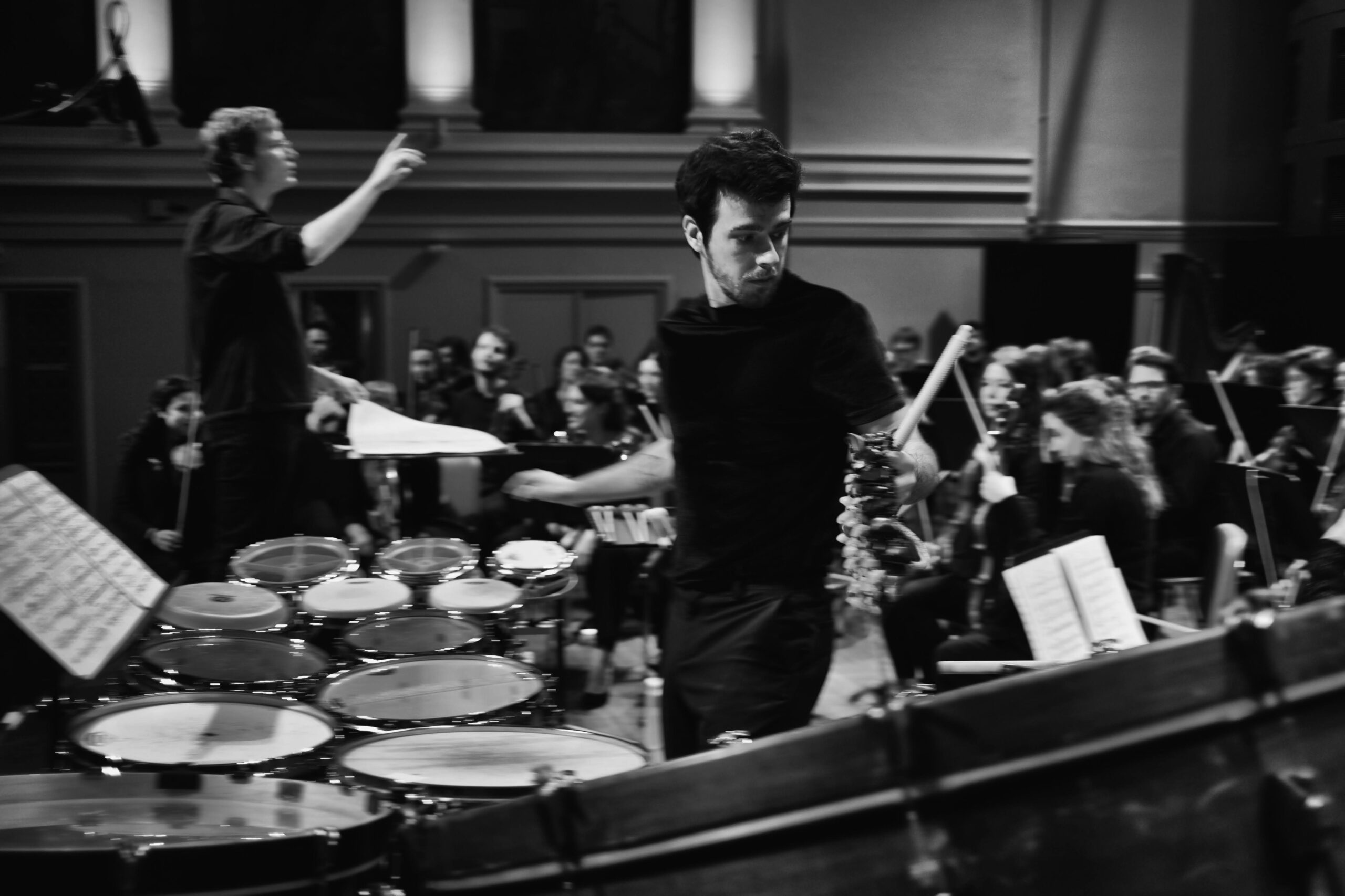
Se/Fe – for percussion solo and orchestra
duration: ca 15’
instrumentation: perc + 3(1.2.3/picc).2(1.2/ca).2.2(1.2/cbn)-4.2.3.1-timp+3-hp-str
written in 2023, commissioned by Continuo
first performance: 2024-01-27 by Wim Pelgrims, Kevin Hendrickx and Continuo at Miry Concertzaal, Gent
programme note:
Two fundamental movements on the drum, i.e. rubbing the skin and hitting it, are developed into the two movements of this concerto for percussion and orchestra. The soloist first interacts with the orchestra with hisses, rustles, scratches and scrapes and then carries it along in a rapid, metrically unpredictable movement.
A continuous pulse constantly changes colour by, on the one hand, the use of thirteen different drums and the way they are played, and, on the other, different instruments and playing techniques in the orchestra. Soloist and orchestra go their separate ways after a while: the percussion becomes more independent and in the orchestra, pitch and harmony become increasingly prominent.
The chemical elements in the title are personal and free associations and symbols, and do not indicate an attempt to make these materials audible. Se points to a kinship with the continuous scratching on the tam-tam in Te (2023) for voice, percussion and tape. The name Selenium, derived from the Ancient Greek Σελήνη (Moon), could symbolise the ‘otherworldly’ nature of music constructed from noise. But it also prompted references to works such as Mondnacht, Pierrot Lunaire, The Planets, and Atlas Eclipticalis.
Fe, the most common element here on earth, can counterbalance the nonmetal Se, which we associated with the moon. The earth’s core is made of iron, as is that of modern society. Our (all too) iron world, without wanting to magnify its ugliness, could be metaphorically represented with drumbeats, referring to their military origin. The concrete of short and rapid pulses with irregular accents thus form an earthly counterpart to the eternal harmony of the spheres.
